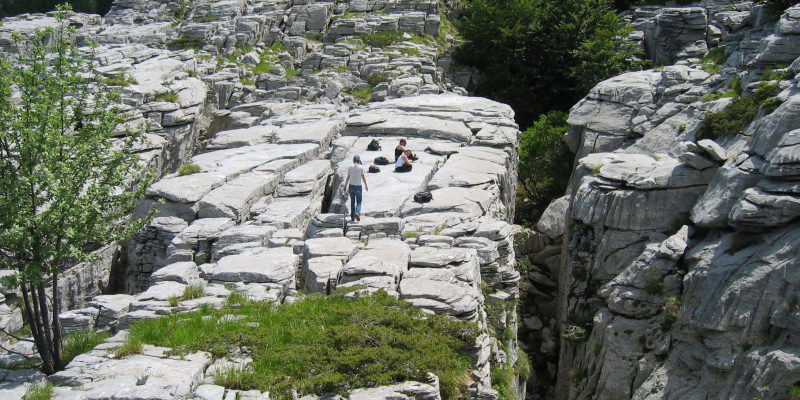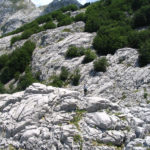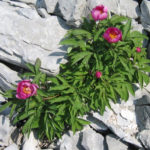
The Vetricia plateau seen from Focetta del Puntone.
n the former posts of this blog we have always described curious facts and particular aspects of the Grotta del Vento. We should not forget however that a deep karst environment, constantly filled with darkness, almost always corresponds to a superficial karstification which often presents some very interesting aspects, both from a scientific point of view and purely from that of the landscape.
The absorption zone which supplies water to the underground complex of the Massif of the Panie is made up of a series of plains and gentle limestone slopes situated on the north face of the mountain.
Amongst them the most important is the Vetricia Plateau, a rocky hump far from any footpath where rainwater and melting snow have created a fantastic landscape, where numerous crevices of every size cross one another in all directions, while the grooves caused by dissolution, parallel to one another and separated by thin crests of sharp rock, seen from a distance resemble petrified waterfalls. There are numerous abysses which sink into the darkness of an underground world about which we still know very little. Amongst the most spectacular of these there is the Revel abyss a colossal huge drop three hundred metres deep. A short distance away, under the Pizzo delle Saette, the Bombassei abyss opens up, which with a rapid succession of shafts goes down for a depth of almost one thousand metres.
Unfortunately no connection practicable by man has been found between the absorption zone and the Grotta del Vento, a cavity that probably is only a small part of an immense underground world still to be discovered.
To visit the amazing landscape of the Vetricia Plateau it is better to start from Gallicano and go up until the locality called “Piglionico”, where the road ends. Proceed on foot along path n° 7 until the Rossi refuge and Focetta del Puntone (one hour and forty minutes walking). Here leave the path and go down towards the hump which makes up the Vetricia Plateau. In the last part the path gets particularly rugged, only suitable for fit people in good health who do not suffer from vertigo and are used to difficult hikes. No springs exist, so it is better to bring a lot of water. In the case of fog orientation can be difficult.
- Il versante nord del massiccio delle Panie. The north face of the Massif of the Panie.
- La flora della Vetricia comprende delle magnifiche peonie. The flora of the Vetricia includes magnificent peonies.










